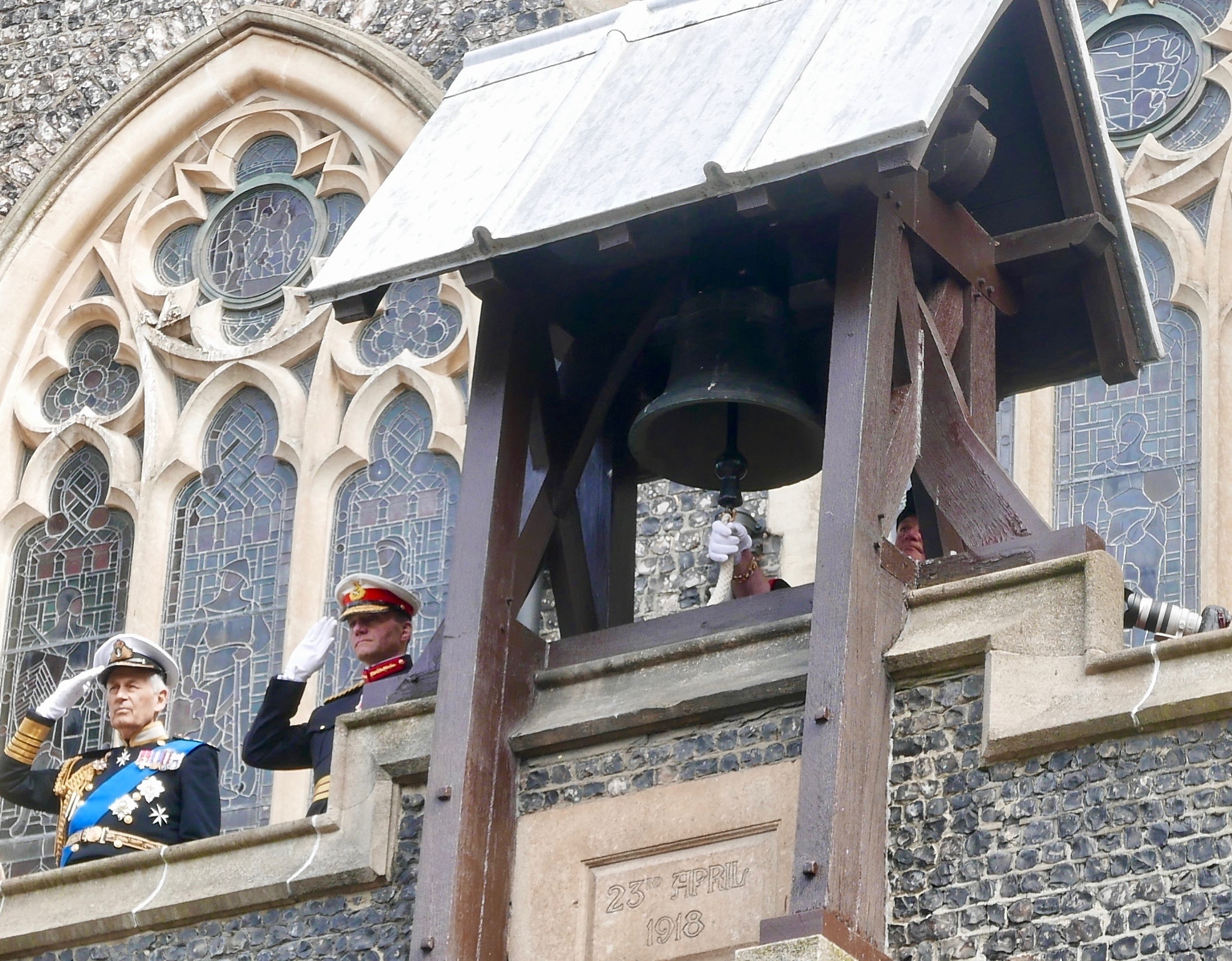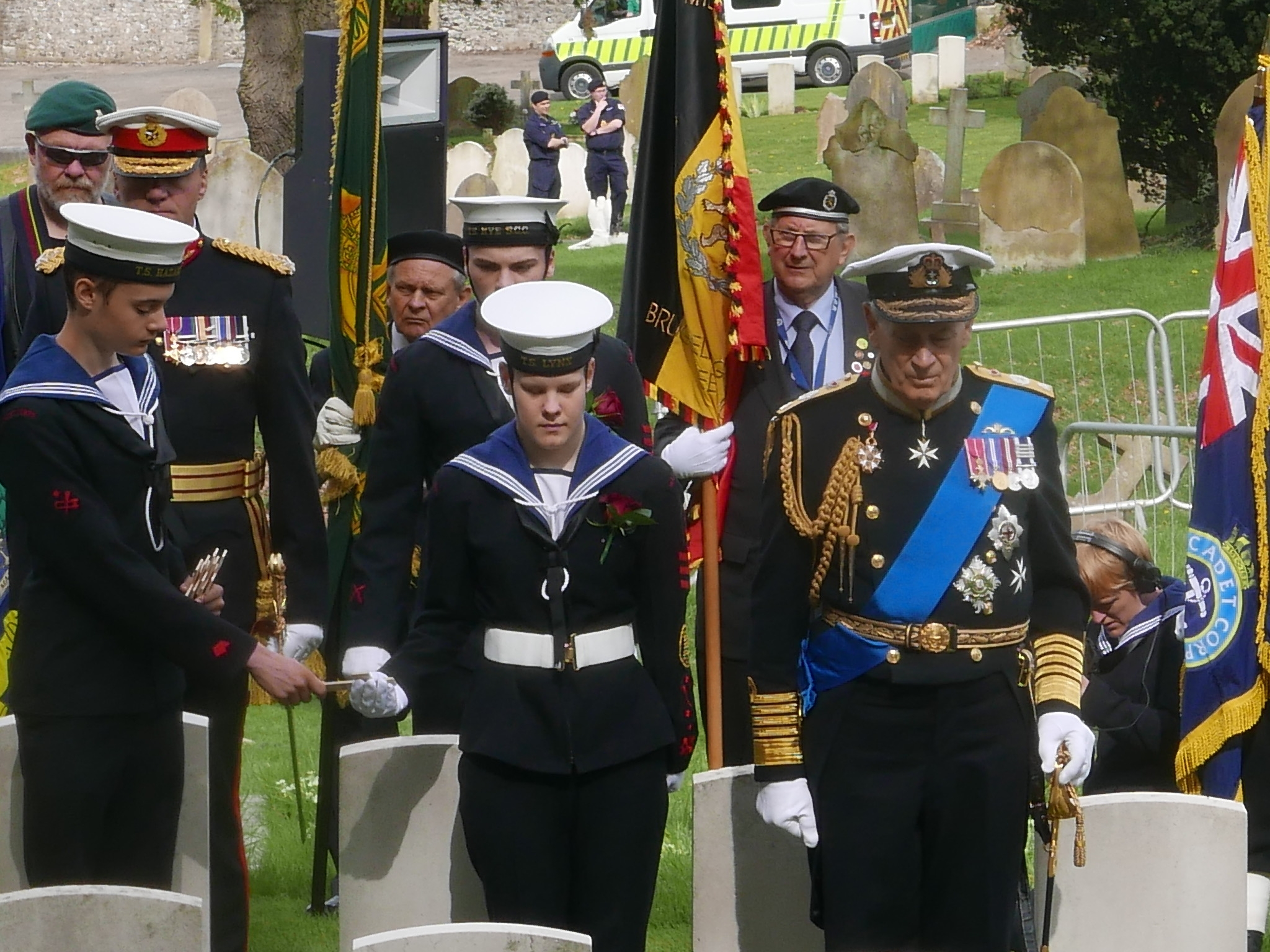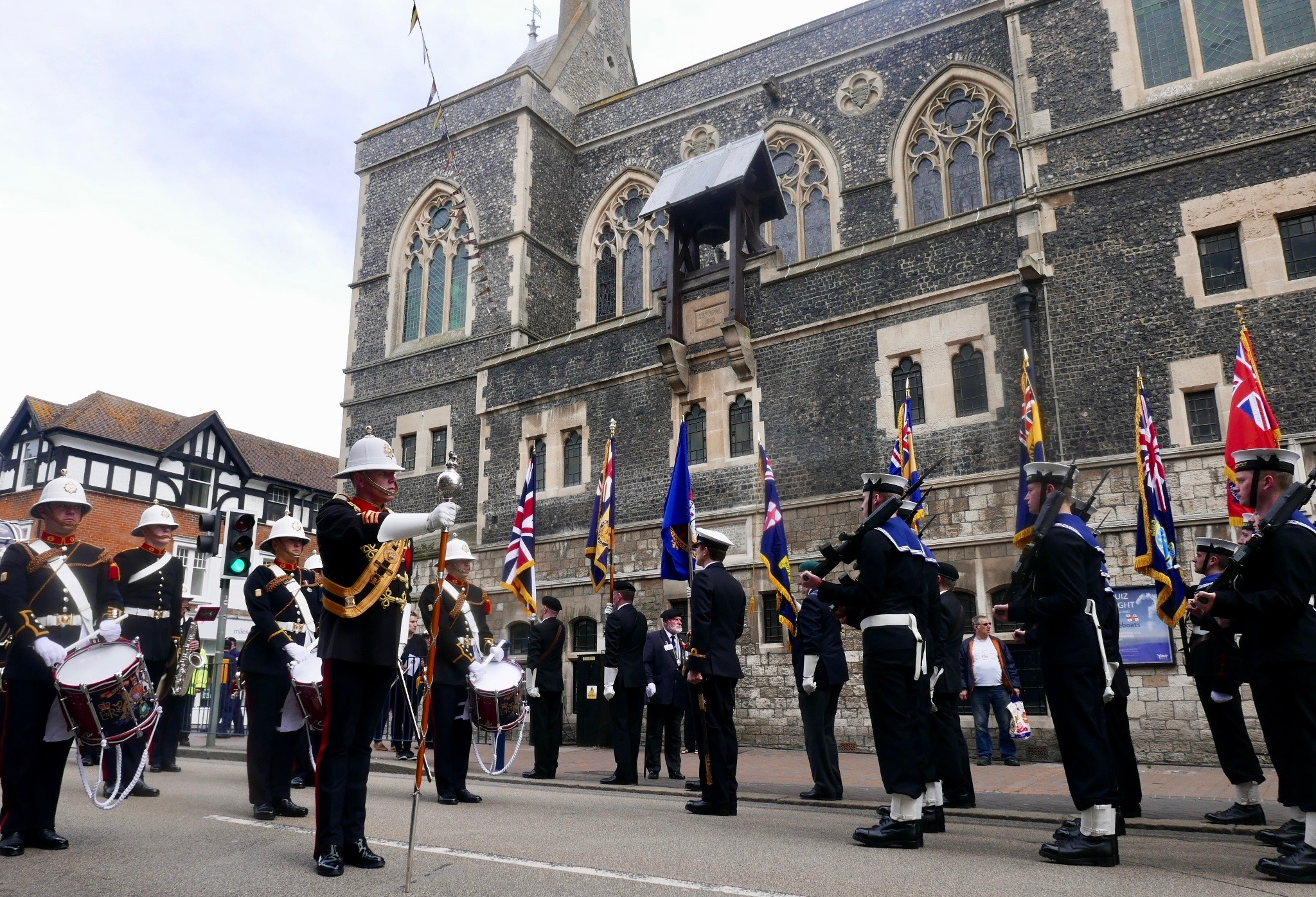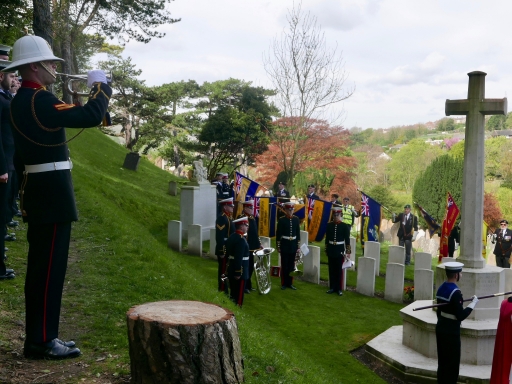Centenary News rounds off coverage of the 2018 Zeebrugge Raid Centenary events with a report from commemorations in Dover.
After a weekend of ceremonies on the Flanders coast, it was the turn of the Kent port to lead tributes on April 23, 100 years to the day since the Royal Navy struck at Ostend and Zeebrugge in an attempt to deny German U-boats access to the North Sea.
Guests, many of whom had taken part in the Belgian commemorations, gathered again – this time for a service of remembrance at the CWGC Zeebrugge plot in St James’s Cemetery, Dover, where some of the fallen lie alongside their chief, Vice-Admiral Roger Keyes.
A German naval representative took part in the wreath-laying, joined by counterparts from Belgium, Australia and New Zealand.
The morning’s events culminated in a military parade to the town hall, Maison Dieu, through streets lined with crowds. The Mayor of Dover, then struck a bell presented in gratitude by King Albert I of Belgium, observing a tradition that goes back to the years immediately following the First World War.

Admiral Lord Boyce (left), Lord Warden of the Cinque Ports, and Major General Charlie Strickland, Commandant General of the Royal Marines, salute as Dover’s Mayor, Councillor Neil Rix, sounds the Zeebrugge Bell (Photo: Centenary News)
The Zeebrugge Bell is still rung annually at noon on the anniversary of the St George’s Day Raid. Ahead of this year’s centenary, it had been restored and cleaned by the Loughborough bell foundry of John Taylor & Co. Conservation work was also carried on its wooden housing and tower.
As commander of the Dover Patrol, it was Admiral Roger Keyes who planned and led the raids on the harbours of occupied Flanders in 1918. The patrol had grown in importance since 1914 as a force to protect Allied shipping in the Channel from German U-boat attacks. Keyes had already made a name for himself in the Dardanelles campaign as an advocate of a more aggressive naval strategy.
Although the sinking of blockships failed to stop U-boats putting to sea from Flanders, the daring execution of Admiral Keyes’ plan served as a British morale boost at a time when Germany again appeared to be getting the upper hand on the Western Front. Eleven Victoria Crosses, Britain’s highest decoration for bravery on the battlefield, were awarded.
Most of the dead were brought home on HMS Vindictive, the lead Royal Navy cruiser in the storming of the Zeebrugge harbour wall, or Mole. A makeshift mortuary was set up in Dover’s Market Hall, and 100 years ago today – on 27 April 1918 – the final farewells were made at a mass funeral held at St James’s Cemetery, on the outskirts of the town.
 Sea Cadets planted individual poppy crosses at the Zeebrugge graves in St James’s Cemetery, pausing by each as Admiral Lord Boyce and Major General Charlie Strickland saluted (Photo: Centenary News)
Sea Cadets planted individual poppy crosses at the Zeebrugge graves in St James’s Cemetery, pausing by each as Admiral Lord Boyce and Major General Charlie Strickland saluted (Photo: Centenary News)
At his own request, Admiral of the Fleet Lord Keyes was laid to rest with his men, after his death in December 1945. Overlooking his grave is a separate memorial. Surmounted by a sculpture of St George – England’s patron saint – slaying the dragon, it’s an instant reminder of both the date of the Zeebrugge Raid and the admiration it generated.
That sentiment was again expressed during a brief act of remembrance beneath the Zeebrugge Bell.
“Some may dispute the degree of success of this exploit. But the great initiative, audacity and incomparable bravery of those heroes can never be contested. It will forever be remembered and celebrated.
“Today, 100 years on, we recall how 1700 young British men showed the world that they would fight and die for the freedom of Belgium and Europe.”
 The parade at Maison Dieu – Dover’s town hall (Photo: Centenary News)
The parade at Maison Dieu – Dover’s town hall (Photo: Centenary News)
See also in Centenary News:
100 years ago – the Royal Navy raids Zeebrugge and Ostend.
Zeebrugge remembers fallen of 1918 naval raids
George Nicholson Bradford VC honoured with new memorial in Blankenberge.
‘Battle for the North Sea’ exhibition in Flanders unites 11 Victoria Crosses.
Reporting from Dover by CN Editor
Images: Centenary News
